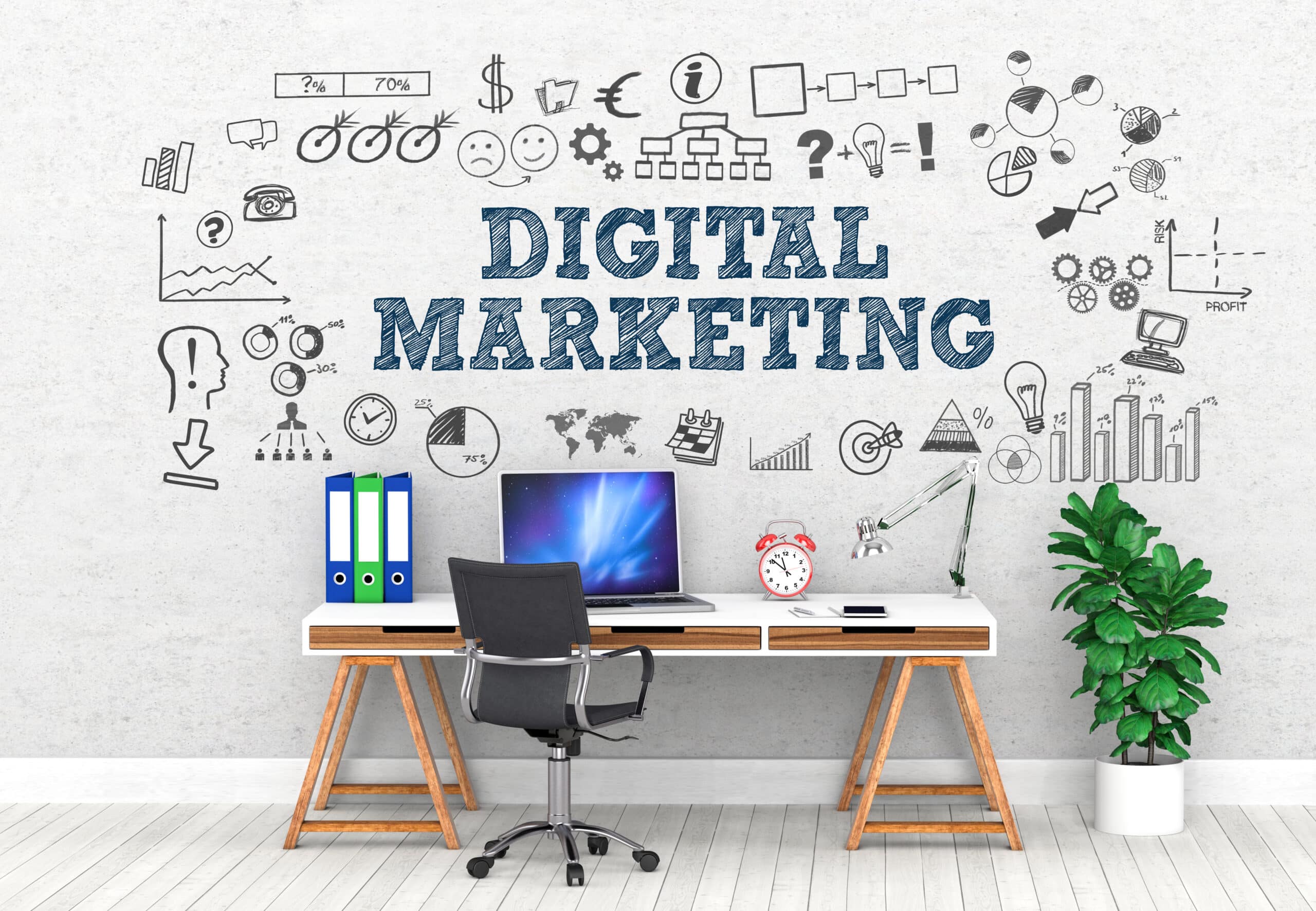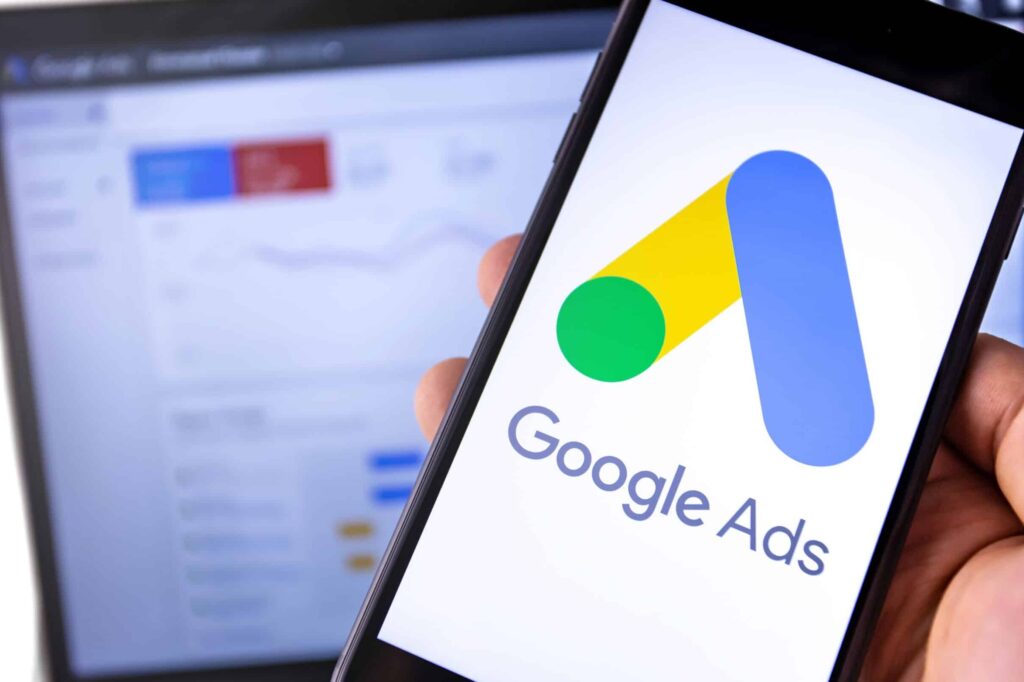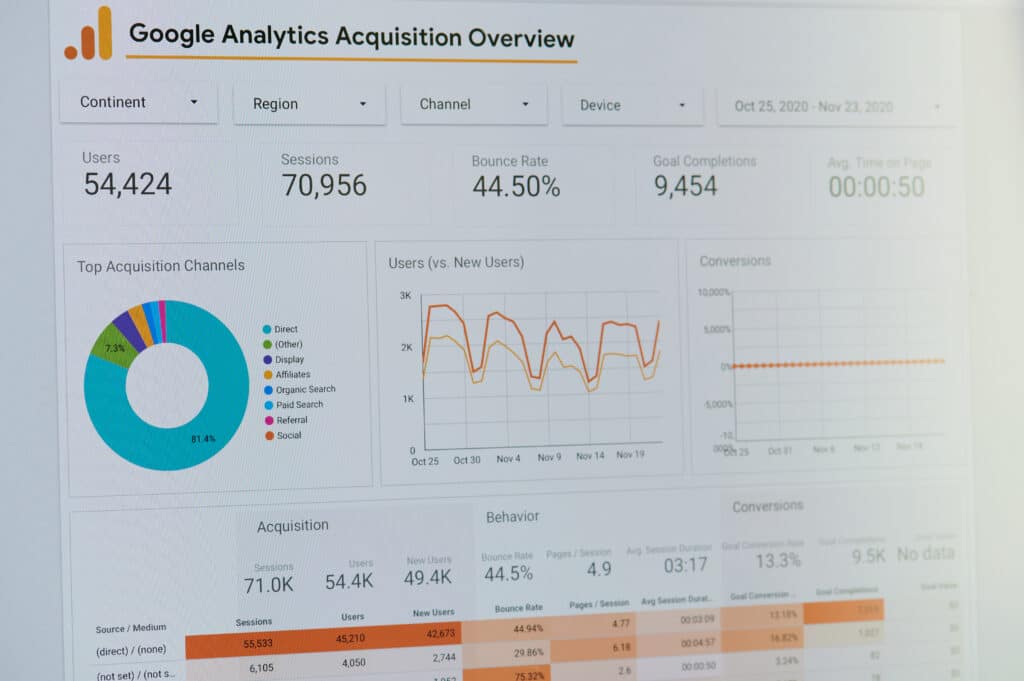Digital Marketing – what type of digital advertising should I use for my business?
 Reading Time: 11 minutes
Reading Time: 11 minutes
Table of Contents
Introduction
In today’s digital age, the world of advertising has shifted significantly towards online platforms. As a small business owner, you may be wondering what type of digital advertising would be best suited for your business. With options like Google Ads and Meta Ads, it can be overwhelming to know where to start. This article aims to provide you with valuable insights on the various types of digital marketing services and options that are available and how you can make the most of them to drive success for your business.
Understanding the Basics of Digital Advertising
At the core of digital advertising lies the art and science of leveraging online platforms to promote your products or services. It’s an ecosystem where visibility is key, and the objective is to connect with your target audience in the most effective and efficient manner possible.
The digital advertising spectrum encompasses a variety of formats, from search engine ads and social media posts to banner ads and video content, each offering unique advantages and opportunities for engagement.
Crucially, the foundation of effective digital advertising is built on two pillars: targeting and analytics.
Targeting allows advertisers to pinpoint their messaging towards segments of the online population who are most likely to be interested in what they’re offering, based on factors like demographics, browsing behaviour, and specific interests. This precision ensures that your advertising budget is spent on reaching the right people.
Meanwhile, analytics provide the insights needed to understand how well your ads are performing. They allow you to track everything from how many people are seeing your ads, to how many are taking the desired action, such as making a purchase or signing up for a newsletter.
By analysing this data, advertisers can continuously refine their strategies, enhancing the effectiveness of their campaigns over time. This iterative process is crucial for achieving the best possible return on investment in the fast-paced world of digital advertising.
The Power of Google Ads for Small Businesses
The allure of Google Ads lies in its unprecedented reach and precision targeting capabilities. With millions of searches conducted on Google every day, the platform offers a unique opportunity for small businesses to position themselves in front of potential customers precisely when they are seeking products or services akin to what these businesses offer.
The utility of Google Ads is not just limited to its expansive reach; it also shines in its flexibility and scalability. Small business owners can start with a modest budget, testing the waters without the apprehension of substantial financial commitment. The platform enables businesses to bid on keywords relevant to their products or services, thus ensuring that their ads appear to an audience with a demonstrated interest in their offerings. This precision not only enhances the likelihood of conversion but also ensures that advertising spend is channelled effectively, yielding a higher return on investment.

Moreover, Google Ads is imbued with robust analytics and tracking tools, allowing businesses to measure the performance of their campaigns with granular detail. This insight is invaluable for small businesses in making informed decisions and refining their strategies over time. Whether it’s adjusting bids, tweaking ad copy, or redefining target demographics, Google Ads provides a dynamic environment for continuous improvement and optimisation.
For small businesses grappling with the challenges of visibility and customer acquisition, Google Ads serves as a potent tool. It transcends mere advertising; it’s a strategic asset in the digital marketing arsenal, offering a pathway to growth and sustainability in the competitive online landscape.
(Read our latest article on Google Ads or Bing Ads – which one is better for your small business?)
Unlocking the Potential of Meta Ads
Diving into the realm of Meta Ads, small businesses stand to gain a unique advantage through the comprehensive social network ecosystem encompassing Facebook, Instagram, and WhatsApp. Meta Ads, previously known as Facebook Ads, presents an unparalleled platform for brands to engage with a vast and diverse audience, tapping into the intricacies of human connection and social interaction.
The cornerstone of Meta Ads’ effectiveness lies in its detailed targeting capabilities. Businesses can tailor their advertising efforts based on an array of parameters including demographics, interests, behaviours, and more. This means that your advertisement could reach the newsfeed of someone who has shown a keen interest in products or services similar to yours, thereby increasing the likelihood of engagement and conversion.
Another compelling feature of Meta Ads is the variety of ad formats available. From the visually striking carousel ads to interactive stories ads, small businesses have the flexibility to choose the format that best aligns with their brand identity and campaign objectives. These creative formats, coupled with the compelling storytelling potential of social media, empower businesses to craft narratives that resonate with their target audience, fostering a sense of connection and loyalty.
Meta Ads also offers robust analytics tools, providing detailed insights into campaign performance. By understanding which ads are driving engagement and conversions, businesses can make data-driven adjustments to optimise their advertising spend and strategy.
In a landscape where social media plays a pivotal role in consumer behaviour, leveraging Meta Ads allows small businesses to not just advertise, but to build lasting relationships with their audience. It’s an investment in not just visibility, but in fostering community and brand affinity in the digital age.
Deciding Between Google Ads and Meta Ads
Navigating the decision between Google Ads and Meta Ads requires a nuanced understanding of your business’s unique needs and the preferences of your target audience. Each platform offers distinct advantages, yet their effectiveness hinges on the alignment with your marketing objectives and the nature of your audience’s online behaviour.
Google Ads, with its search-based advertising, excels in capturing the attention of users actively seeking products or services similar to what your business offers. It’s particularly effective for businesses aiming to intercept potential customers at the moment of intent. This makes it a formidable tool for driving conversions and capturing leads.
On the other hand, if your business thrives on impulse purchases or benefits from visual storytelling and brand building, Meta Ads’ strength in creating engaging narratives through rich media formats could offer superior value. The social nature of Meta platforms also facilitates higher engagement rates, making it ideal for businesses looking to foster community or drive brand awareness through interaction.

Your decision should also factor in the customer journey. Consider where your potential customers are likely to spend their time online and at what stage they might be more receptive to your messaging. For a strategy encompassing the full spectrum of customer engagement, a blend of both Google Ads and Meta Ads could be the optimal approach, leveraging the search intent capture of Google with the brand-building prowess of Meta.
Ultimately, understanding your audience’s online habits, combined with clear objectives for your campaigns, will guide you towards the right choice between Google Ads and Meta Ads, or perhaps, encourage a balanced integration of both.
The Importance of Target Audience Understanding
In the intricate tapestry of digital marketing, the thread that interweaves through every successful campaign is a profound understanding of the target audience. Grasping the nuances of your audience’s needs, preferences, and online behaviour is not just beneficial; it’s imperative. This knowledge serves as the compass guiding your digital advertising strategies, ensuring they resonate deeply and drive meaningful engagement.
Demystifying the profile of your potential customers goes beyond mere demographics. It’s about delving into psychographics – their interests, values, and the problems they seek to solve. By attuning to these subtleties, you’re better positioned to craft messages that speak directly to their desires and concerns, significantly enhancing the efficacy of your campaigns. For instance, the insights gleaned from audience analysis can inform your choice between Google Ads and Meta Ads, the keywords or interests you target, and even the creative execution of your ads.
Moreover, understanding your audience facilitates a more personalised approach to digital advertising. In an era where consumers are inundated with generic ads, personalisation stands out as a beacon of relevance. It’s the difference between an ad that is scrolled past and one that sparks engagement. This deep audience insight enables you to tailor your ads to reflect the specific stages of the customer journey, ensuring that your messaging is timely and pertinent.
In essence, the art of digital advertising pivots on the axis of audience understanding. It’s the foundation upon which successful campaigns are built, allowing for precision targeting, compelling messaging, and ultimately, a more profound connection with your prospective customers.
Budgeting Wisely for Maximum Impact
Delving into the financial aspects of digital advertising, crafting a budget that maximises impact without overreaching is crucial for small businesses. This delicate balance requires an astute understanding of your advertising objectives and a pragmatic approach to allocating resources. Starting with a clear delineation of your goals—be it brand awareness, lead generation, or direct sales—is paramount. Each objective comes with its own set of metrics and platforms that can offer the most bang for your buck.
An effective strategy is to adopt a phased approach to budgeting, where you begin with a test phase. Allocate a portion of your budget to experiment across different platforms, ad formats, and targeting options. This experimentation allows you to gather data on what resonates best with your target audience and provides the highest return on investment. For instance, a small-scale campaign on Google Ads might reveal the keywords that drive the most traffic, while a similar investment in Meta Ads could uncover the ad formats that engage your audience the most.
Armed with this insight, you can then refine your budget allocation, channelling funds into the most effective campaigns and platforms. It’s also wise to keep a portion of your budget reserved for opportunistic adjustments. The digital advertising landscape is dynamic, with trends and consumer behaviours evolving. Having the flexibility to pivot and capitalise on emerging opportunities can be a game-changer for small businesses.
In essence, budgeting wisely in digital advertising is not about spending less; it’s about spending smart. It’s about leveraging data and insights to make informed decisions that propel your business forward in the digital realm. This is where working with a digital marketing professional can help grow your business online, by managing your paid ads and being involved in them on a daily basis.
Tracking and Measuring Your Ad Campaign Success
Embarking on the journey of digital advertising, the significance of tracking and measuring the success of your ad campaigns cannot be overstated. It’s akin to navigating a ship through the vast ocean of data; without a compass, one is simply adrift. The essence of this process is rooted in leveraging analytics to glean actionable insights, a crucial step in fine-tuning your marketing strategies for optimal performance.
Platforms such as Google Ads and Meta Ads are equipped with comprehensive analytics tools designed to shed light on various facets of your campaigns. These include metrics like click-through rates, conversion rates, and cost per acquisition, each serving as a critical indicator of your ads’ effectiveness. By closely monitoring these metrics, you can discern which aspects of your campaigns are thriving and which require recalibration.

However, the key to harnessing these insights effectively lies in setting specific, measurable goals at the outset of your campaign. Whether your aim is to enhance brand visibility, increase website traffic, or drive sales, having clear objectives allows you to align your tracking efforts accordingly. This focused approach ensures that the data you collect is relevant, providing a solid foundation upon which to base your decisions.
Moreover, integrating these insights into your ongoing strategies enables a culture of continuous improvement. It allows for agile adjustments, whether in real-time bid adjustments, keyword refinement, or creative optimisation, ensuring that your digital advertising endeavours remain robust and responsive to the ever-evolving digital landscape.
Common Mistakes to Avoid in Digital Advertising
Venturing into the realm of digital advertising presents a myriad of opportunities, yet it’s equally fraught with pitfalls that can derail your efforts if not cautiously navigated. One prevalent misstep is neglecting the refinement of target audience parameters. Broad, undefined targeting can lead to wasteful expenditure, casting your net too wide with little to show in return. It’s essential to harness the power of analytics and insights to tailor your campaigns for precision rather than adopting a scattergun approach.
Another oversight is overlooking the importance of ad creative, messaging and optimising landing pages. In a digital space crowded with content, lacklustre creatives will fail to capture attention, let alone foster engagement. Investing in high-quality, resonant ad creatives that echo your brand’s voice and appeal to your audience’s preferences is non-negotiable.
Additionally, an underestimation of the necessity for ongoing optimisation can stifle campaign effectiveness. Digital advertising is not a ‘set and forget’ endeavour. Continuous monitoring and adjustment based on performance analytics are crucial to maximise returns and adapt to changing market dynamics.
Lastly, a common pitfall is the failure to adequately budget for testing. Many dive into digital advertising with rigid budget allocations that leave little room for experimentation. However, testing different ad formats, platforms, and strategies is vital to uncovering what truly resonates with your target audience, thereby informing more strategic budget deployment in future campaigns.
Future Trends in Digital Advertising to Watch
As we venture further into the digital age, anticipating the trajectory of digital advertising trends is paramount for staying ahead of the curve. One such trend gaining momentum is the integration of artificial intelligence (AI) and machine learning in ad platforms. These technologies are set to revolutionise how we target and personalise ads, enabling unprecedented levels of precision and efficiency in reaching the desired audience. Additionally, the rise of voice search is poised to reshape keyword strategies, with a shift towards more conversational, long-tail keywords in response to how people naturally speak to voice-activated devices.
Another noteworthy trend is the increasing emphasis on privacy and data protection. With consumers becoming more aware of their digital footprints, advertisers must navigate the fine line between personalisation and privacy, adapting strategies to comply with stricter data regulations while still delivering personalised experiences.
Lastly, the expansion of augmented reality (AR) in advertising offers a new frontier for interactive and immersive ad experiences. AR enables brands to create engaging, memorable campaigns that transcend traditional digital ads, fostering a deeper connection with the audience.
Staying attuned to these trends will be essential for advertisers seeking to maintain relevance and efficacy in their digital marketing strategies in the years to come.
Conclusion
Embarking on the digital advertising journey equips small businesses with the tools and avenues to carve out a significant presence in the online world. The exploration of platforms such as Google Ads and Meta Ads reveals a landscape rich with potential for precision targeting, engaging storytelling, and meaningful connections with your audience. While the choices might seem daunting at first, the key to unlocking the true power of digital advertising lies in a deep understanding of your business objectives, audience preferences, and the nuanced dynamics of online behaviour.
A thoughtful approach, underpinned by continuous learning and adaptation, transforms the complexities of digital marketing into opportunities for growth and engagement. By steering clear of common pitfalls and staying abreast of emerging trends, businesses can navigate the digital realm with confidence. The digital marketing journey is one of discovery, innovation, and connection, offering a pathway to not just reach but resonate with your audience, turning digital footprints into lasting impressions.
In the ever-evolving landscape of digital advertising, the only constant is change. Embracing this change, armed with knowledge and a strategic mindset, small businesses can thrive, turning challenges into stepping stones towards success.

